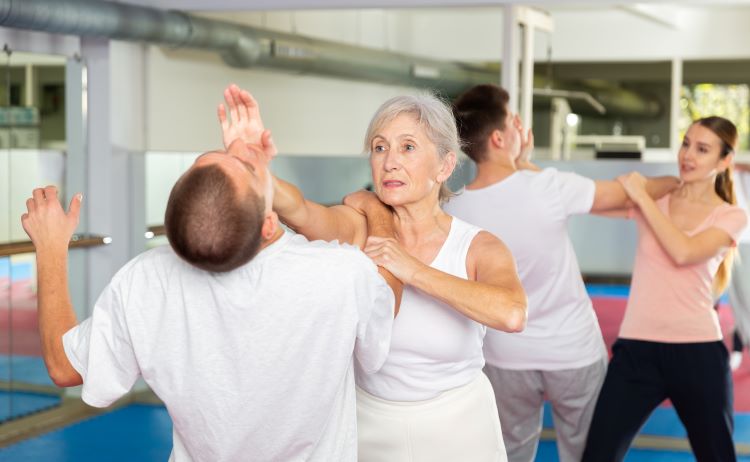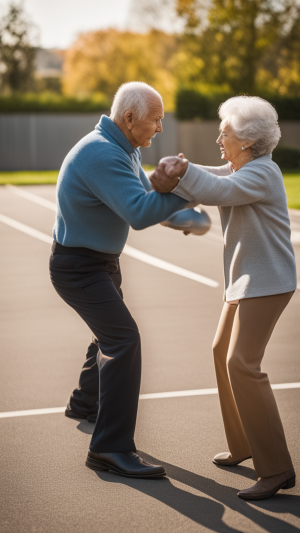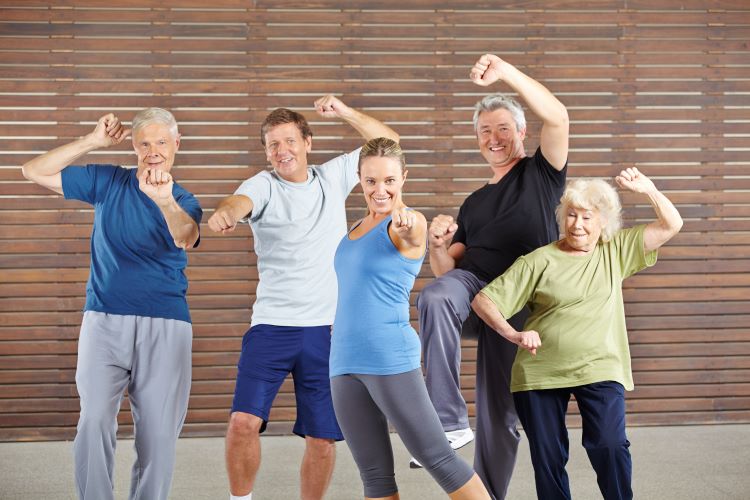Understanding the Fundamentals of Self-Defense for Seniors

I love researching and writing about things I want to learn. It makes me take the time to actually learn it! Here I’m going to talk about why self-defense for seniors is pivotal. It’s not just about staying safe; it’s also about empowerment. Older adults (like me!) may often feel vulnerable due to physical or social factors. Still, self-defense is a valuable tool that can help mitigate these feelings by providing practical ways to protect oneself.
I want to change your mind about some of the myths out there. Age is not, and should not be, a barrier to learning self-defense. It’s never too late to start, and many techniques can be adapted to our abilities. I can’t carry a gun due to medical issues, so self-defense beyond guns is important to me.

This isn’t just about learning to throw a punch or execute a perfect kick. It goes beyond that. Safety comes first, always. The primary goal here is to know how to avoid dangerous situations, de-escalate conflicts, and escape should things turn sour. It’s a three-fold strategy that can make all the difference.
I think the mental part is vital to learning self-defense, which is just as crucial as the physical part. Situational awareness and trusting your gut instincts are vital factors. You’ll learn about building and relying on these skills to navigate potentially harmful scenarios better.
I believe the essence of senior-friendly self-defense is making it accessible and achievable. By focusing on simplicity and efficacy, you can be confident in safeguarding your well-being. This next section will concentrate on the techniques—how to adapt them to your needs and turn them into a powerful component of your daily life.
Senior-Friendly Self-Defense Techniques: Accessibility and Efficacy
Discover self-defense techniques tailored for seniors that emphasize safety without the need for Herculean strength or flexibility. It’s all about being intelligent and resourceful in potentially risky situations. There are books to help with this. There are tips for aging parents in these books, too.
Not all self-defense with seniors strategies require you to be a mixed martial arts expert. Low-impact strategies do exist. These techniques focus on your body weight, precision, and timing rather than power or speed.

It’s also crucial to understand that self-defense can be adaptive. What that means is these techniques can be customized for individuals with varying levels of mobility or health conditions. Being strategic about your movements can often outsmart brute force.
Don’t overlook the potential of everyday items you carry. Canes, umbrellas, and even hefty keyrings can become a pinch’s defense tools. I have a collapsible walking stick based on the military style with a knife and compass in the top part. It’s about how you use these items that can make a real difference.
Understanding the human anatomy is critical, so here’s what I suggest:
- Focus on learning simple but effective strikes that target vulnerable points such as the eyes, nose, or throat.
- These areas can be sensitive and may offer a better chance for you to escape harm.
- Balance and stability are your secret weapons.
I’ll guide you through exercises that not only improve your self-defense capabilities but also your overall postural stability – and trust me, this will pay dividends in day-to-day life, too. I can tell you right now, sinking your time into learning these techniques is more than just a routine — it’s an investment in your safety and independence.
Practicing Self-Defense Safely: Training Tips for Seniors
Finding a suitable self-defense with seniors class is crucial if you’re ready to take charge of your safety. Look for programs designed for seniors that offer a comfortable learning pace, patient instructors, and the option to modify techniques based on individual ability. Community centers, local gyms, and senior organizations often offer these tailored classes.
The classroom isn’t the end of your practice. Solo practice at home is essential to reinforce what you’ve learned. Set aside time each week to review techniques, keeping in mind to avoid any moves that put undue strain on your body. Remember, self-defense is about smarts, not just physical strength.
Creating a regular self-defense practice schedule is another key to success. Consistency will help embed these vital skills in your muscle memory, making it more likely you’ll react appropriately if confronted with a threat. Choose a sustainable rhythm, whether 15 minutes daily or an hour weekly.
Building a support network is also essential. Engage family members, friends, or classmates in your self-defense journey. They can offer encouragement, share tips, and even serve as practice partners.
The ultimate goal of learning self-defense is to protect yourself and gain the confidence and peace of mind that comes with knowing you can. This assurance alone is robust and can improve your quality of life significantly.
Have you taken self-defense classes? Do you have a tip or trick you can share to help others with self-defense? Please share your comments below about this subject or an associated self-defense idea.





